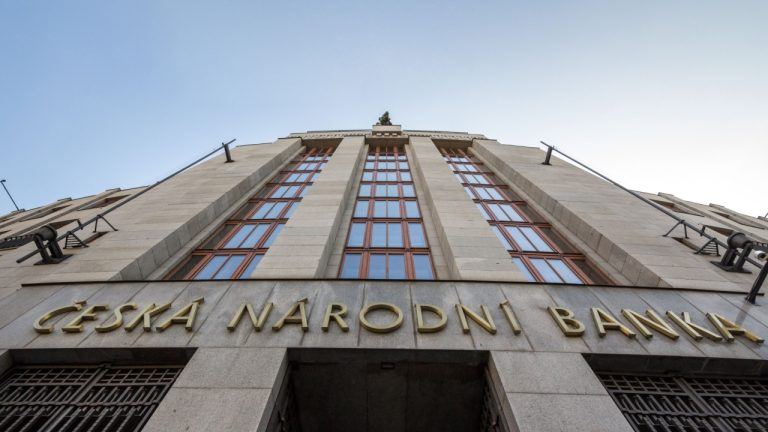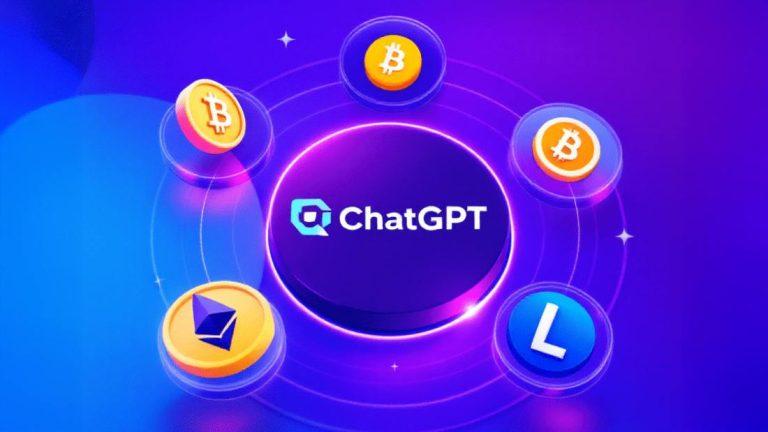
Cross-Chain Bridges as a Way To Solve Blockchains’ Tower of Babel Problem
Although blockchain technology holds great promise, its biggest weakness is its lack of interoperability. The result is that different blockchains cannot communicate with one another or share data.
This can be called the blockchain ‘Tower of Babel’ problem. Due to this fragmentation, users have to choose between multiple incompatible technologies, preventing crypto’s mass adoption.
What is the primary cause of this problem? Blockchains are inherently siloed systems with specific protocols and standards, requiring a single ledger for all operations.
Communication between two blockchains is like trying to communicate between two languages without a translator. The two cannot communicate until they establish a common language.
Does this mean we shouldn’t even try and just accept that crypto cannot function as a united industry since blockchains lack communication? The good news is that there are techniques that can be used to facilitate interoperability between blockchain networks.
These efforts, however, seem insufficient at this point, and developers should pay more attention to this problem.
Since so much economic activity takes place on isolated networks, it is becoming increasingly clear that Web 3.0 needs robust cross-chain interoperability solutions, which will allow tokens and data to move securely across blockchains.
So, in what ways can blockchains interact? The following are some common interoperability techniques.
Sidechains
While sidechains are often lumped together with other layer two solutions, they actually differ from them. Generally, sidechains consist of two different blockchains the mainchain and the sidechain linked by a cross-chain communication protocol.
Through them, digital assets and transactions can be transferred from blockchain’s mainnet to a separate chain of blocks. Therefore, they can be processed and verified more quickly without slowing down the network.
Sidechains are like your daily commute to work, where you use the HOV lane and reach your destination in a fraction of the time.
Examples of sidechain platforms include MimbleWimble, the PoA (proof of authority) network (now part of the Gnosis ecosystem) and DeFi-focused RSK.
Relays
Blockchain relays are systems built within blockchains that can validate and read events and/or states in other blockchains.
With relays, one blockchain can check the data of other blockchain networks without having to rely on exterior third-party resources.
However, it is very difficult to connect existing blockchains that do not share similar characteristics.
This is like trying to build a bridge between two islands that have vastly different terrain it may be possible, but it requires a great deal of effort and skill to make the connection.
Notary schemes
Transactions under the notary scheme method rely on a third-party notary, handling parties’ lack of trust. A notary’s role is to verify blockchain events and feed that information to a second blockchain.
To accomplish this, the notary should be registered on both blockchains the source and the target.
A single-signature notary or a multi-signature notary can be used in notary schemes.
A single-signature notary collects transaction data from a source chain and validates it before initiating a transaction on a target chain. It is also called a centralized notary.
To achieve cross-chain interoperability with high transaction speed, single-signature notary schemes are a great solution. The disadvantage of this system is that it relies on a centralized body.
Additionally, it is vulnerable to individual node failures and misbehaviors.
Multi-signature notaries require that a cross-chain request initiated by user one on the source chain is successfully verified by the majority of nodes/notaries. After signatures from multiple nodes are verified, the corresponding transaction is added to the target chain.
To tolerate Byzantine faults, a Byzantine-fault-tolerant consensus algorithm is used, so cross-chain transactions can only be processed and transmitted to a target blockchain if over two-thirds of notaries reach consensus and sign the transaction.
Notary schemes are used by platforms such as Herdius a decentralized exchange platform and Bifrost for interoperability between blockchains.
Oracles
Essentially, an oracle is an agent that transfers external data to the blockchain platform for on-chain processing. Oracles are like the postmen of the blockchain world, delivering off-chain data to smart contracts so they can do their job.
Through decentralized oracle services, off-chain data can be fed to blockchain-enabled smart contracts by ensuring multiple ecosystems are referring to the same source of truth. For an oracle to be effective, it must be trusted.
Some of the most popular oracles in the industry are Chainlink, Universal Market Access, API3, Band Protocol, Nest Protocol, XYO Network, iExec RLC and WINkLink.
Hashed TimeLocks
HTLC (Hashed TimeLock Contract) is another blockchain interoperability solution for building smart contracts that can modify payment channels.
The HTLC is essentially an implementation of time-bound transactions in the crypto space. The transaction is void if a cryptographic proof of payment receipt is not provided by the recipient within a specified time frame.
Bitcoin’s Lightning Network is a proposed implementation of HTLCs with bi-directional payment channels that allow secure peer-to-peer payments.
The architecture of payment channels enables any peer on the network to pay any other peer, even if they don’t have a direct channel open between them.
Cross-chain bridges
Currently, cross-chain bridges are emerging as a promising solution to enable blockchain networks to interact.
Cross-chain bridges are designed to facilitate the exchange of data, assets and messages between different blockchain networks.
Non-native blockchain networks are connected through a secure connection, allowing them to communicate and transact with each other, sharing resources and arbitrary data.
There are three main types of mechanisms that power cross-chain bridges.
- The ‘lock and mint’ mechanism involves locking up tokens on the source chain inside a smart contract then minting wrapped versions of those tokens on the destination chain as IOU tokens, a digital asset that represents debt between the parties. As a reverse operation, wrapped tokens on the destination chain are burned to unlock their original source chain coins.
- The ‘burn and mint’ model involves burning an asset on one blockchain while minting the same amount on the destination chain. That means that tokens are destroyed once and for all on one network then a matching number is issued on another. The burn process is usually described as a cryptographic technique to create a proof of token transfer. In this way, the tokens are assured of their perpetual abolition before they are transferred to another network.
- The ‘lock and unlock’ method involves locking the value token on one network and unlocking it on another network. Thus, tokens are encapsulated on one blockchain, protected by a smart contract, while the cost is unlocked on another blockchain. Normally, this is known as a peg system, in which the ratio between the lock value and the unlock value has already been set.
Among the leading cross-chain projects are Polkadot, Blocknet, Cosmos and Wanchain, each focusing on a different aspect of interoperability. Through the use of parachains and native bridges, Polkadot facilitates interoperability between non-interoperable blockchain networks.
Blocknet focuses more on creating a DEX (decentralized exchange) between blockchains. Wanchain envisions a future where all digital assets are stored on a single network. Cosmos serves as a foundation for various blockchains to connect to through a central protocol.
Other popular blockchain bridges include AnySwap, Binance Bridge and cBridge.
Programmable token bridges
Cross-chain bridges can also be combined with arbitrary data messaging capabilities, allowing any type of data to be moved between blockchains not just tokens.
These programmable token bridges combine token bridging and arbitrary messaging, executing a smart contract call once tokens are delivered to the destination chain.
Cross-chain functionality such as swapping, lending, staking and depositing tokens in a smart contract on the destination chain can be facilitated using this type of bridge.
It’s like having a teleportation device that not only brings you to a new place but also deposits resources in your bank account so you can use them as soon as you arrive.
Trust-based versus trustless blockchain bridges
Blockchain bridges are inherently centralized. If a user wishes to convert their coins into another form of cryptocurrency through them, they will have to temporarily hand over control of those coins.
This is akin to exchanging foreign currency at a bank, where the individual must surrender their existing currency to receive a different one. The exchange rate may be favorable but control of the funds is in the hands of the bank.
There are also decentralized blockchain bridges that offer users the option of transferring coins without a third party’s knowledge, but these services are freelance-based and not always dependable.
So, if you’re looking for a secure way to transfer coins, you’ll have to find a bridge you can trust or just build your own.
Blockchain interoperability challenges
Blockchain bridges offer many benefits, but they also come with many challenges. It is essential to ensure the security and integrity of the bridge itself since it serves as a critical communication link between the two networks.
Furthermore, every blockchain ledger has a different trust model some are supported by hundreds of miners, and others by only a few.
By transferring information from a less reliable ledger to a more reliable one, the more robust blockchain can be manipulated by outside parties and compromised.
If the bridge is compromised, malicious actors could gain access to sensitive information or assets.
Hackers are constantly probing existing blockchain bridges for vulnerabilities and are often successful at finding them. Around $2.5 billion was stolen in 2021 and 2022 by hackers exploiting bridge vulnerabilities.
Also important is the issue of finality he guarantee that funds will be available on the destination chain once they are committed to the source chain.
Without finality, a reversed transaction on the source chain, such as a block reorganization, might cause issues on the destination chain – for example, unbacked bridged tokens.
This is similar to building an archway, where the two sides must be perfectly in sync for it to work. If one side is slightly off, the entire structure will collapse.
Without a guarantee of finality, the bridge between the two chains is just as vulnerable to collapse.
Final thoughts
Interoperability across blockchains offers many benefits. Through interoperable smart contracts, industries such as healthcare and law can exchange data between private and public blockchains, facilitating the creation of Web 3.0 platforms that were previously unimaginable.
Blockchain interoperability may also enable multi-token transactions and wallets, enhancing cryptocurrency users’ experience.
In addition, blockchain-using industries and companies will be able to transfer data and value more readily if they can connect their blockchains.
Blockchain technology’s future is determined by the efficiency, efficacy and usability of blockchain interoperability solutions.
As the saying goes, “Cross the bridge when you come to it.”
There is no such thing for crypto developers, who need to build that bridge for the Web 3.0 future now, as I mentioned in my recent interview rather than waiting until someday.
And we need to make sure that the bridge is strong and secure. Otherwise, we’ll find ourselves treading crypto waters with sharks.
Taras Dovgal is a serial entrepreneur with over 10 years of experience in systems development. With a passion for crypto since 2017, he has co-founded several crypto-related companies and is currently developing a crypto-fiat platform. As a lifelong startup and web development enthusiast, Taras’ goal is to make crypto products accessible to mainstream consumers not just techies.
Follow Us on Twitter Facebook Telegram

Disclaimer: Opinions expressed at The Daily Hodl are not investment advice. Investors should do their due diligence before making any high-risk investments in Bitcoin, cryptocurrency or digital assets. Please be advised that your transfers and trades are at your own risk, and any loses you may incur are your responsibility. The Daily Hodl does not recommend the buying or selling of any cryptocurrencies or digital assets, nor is The Daily Hodl an investment advisor. Please note that The Daily Hodl participates in affiliate marketing.
The post Cross-Chain Bridges as a Way To Solve Blockchains’ Tower of Babel Problem appeared first on The Daily Hodl.
Go to Source
Author: Taras Dovgal









